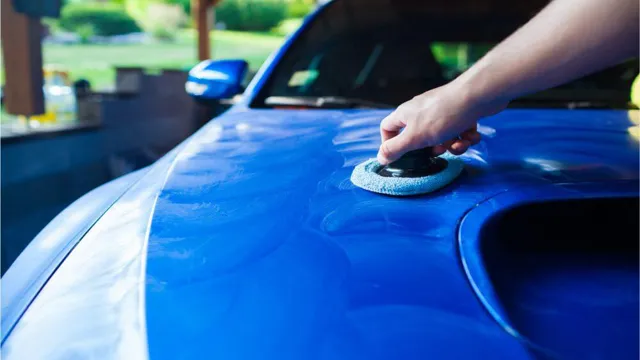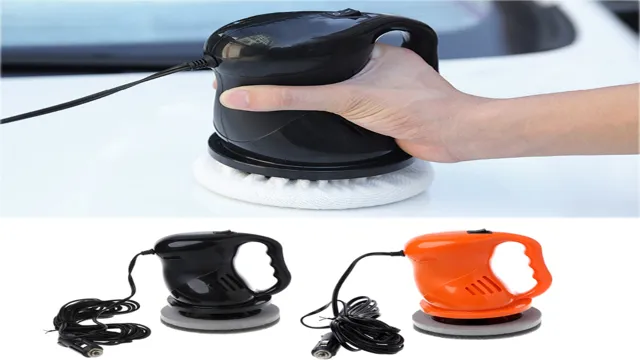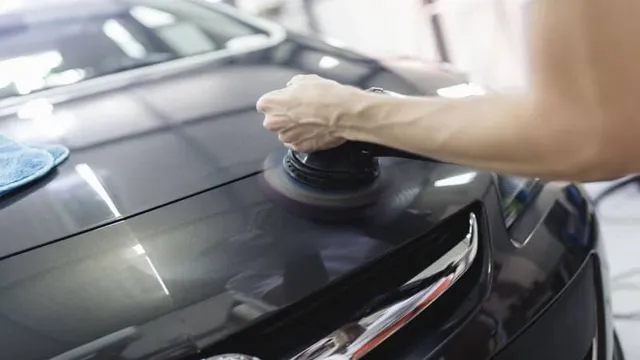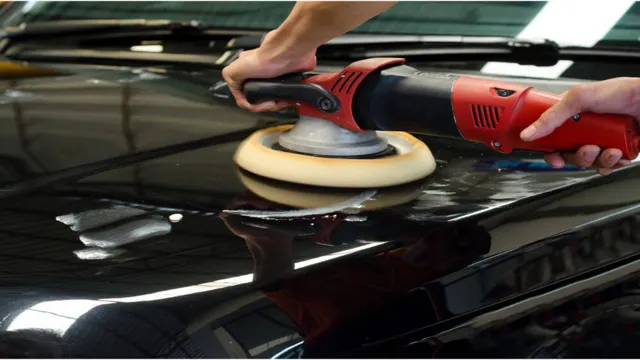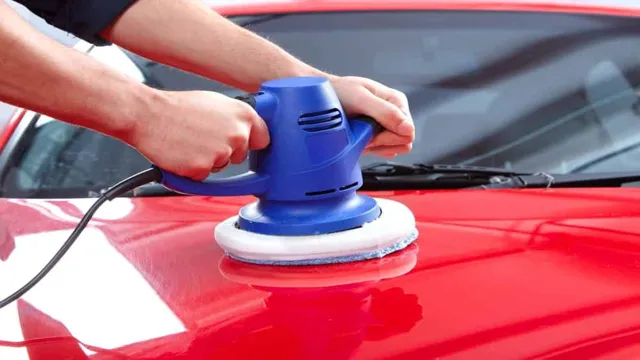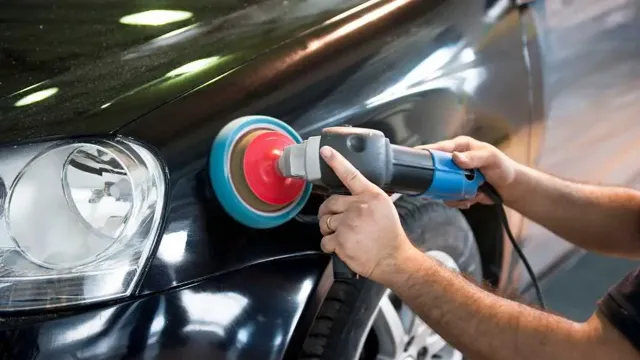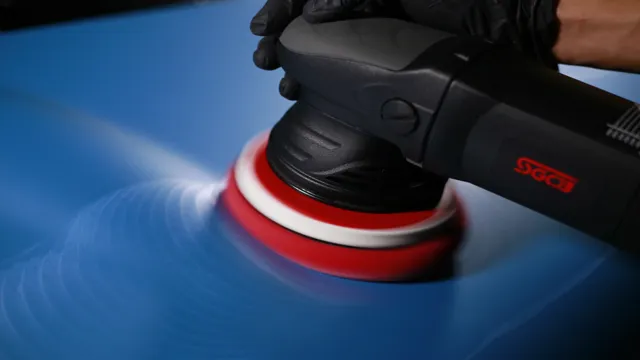How to Use a Buffer Polisher on a Car – Step-by-Step Guide for a Perfect Finish
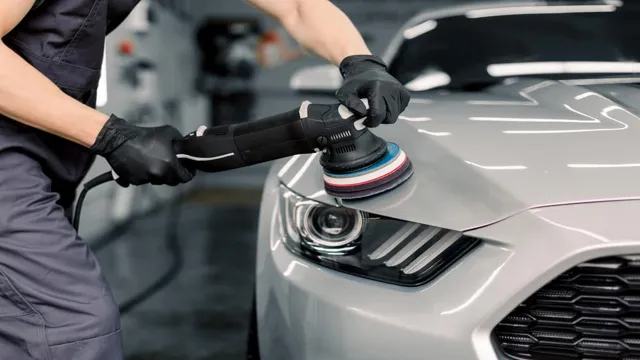
Do you want your car to look impeccably smooth and shiny like it did on the day it rolled out of the factory? If so, you might want to try using a buffer polisher to bring back the lost glimmer of your vehicle. Buffing not only gets rid of scratches, swirls, and oxidation on your car’s paint, but it also removes blemishes and minor imperfections on the paintwork. In this blog, we’ll teach you how to use a buffer polisher effectively to bring your car’s surface to life and make it look brand new again.
So, fasten your seatbelts, and let’s dive in!
Gathering Materials and Preparing the Car
Before attempting to use a buffer polisher on your car, it is important to gather the necessary materials and prepare the vehicle properly. You will need a buffer polisher, rubbing compound, polishing compound, wax, microfiber towels, and a bucket of water. Begin by washing the car thoroughly and drying it with a clean towel.
Then, inspect the surface for any scratches or imperfections that will need to be addressed with the rubbing compound. Apply the rubbing compound to the buffer pad and buff the affected area until the imperfections disappear. Next, switch to the polishing pad and apply the polishing compound to bring out a deep shine.
Finally, apply wax to protect the paint and give it a beautiful finish. With these steps, you are now ready to use the buffer polisher on your car with confidence and achieve professional results.
Washing and Drying the Car
When it comes to washing and drying your car, it’s important to gather all the necessary materials and prepare your vehicle for the task at hand. Firstly, let’s discuss the materials you’ll need for this job. You’ll need a bucket of water, car shampoo, a sponge or microfiber cloth, a hose, and a drying towel.
It’s crucial to use a car shampoo rather than regular dish soap, as dish soap can strip off the wax coating on your car’s surface. Once you have all the materials ready, it’s time to prepare your car for washing. Before you start wetting your car with the hose, make sure all your windows and doors are shut, so you don’t get water inside your vehicle.
Also, remove any loose dirt or debris from your car’s surface by using a brush or a dry lint roller to prevent scratches while washing. Taking these steps before washing will ensure that your car wash is effective and efficient.
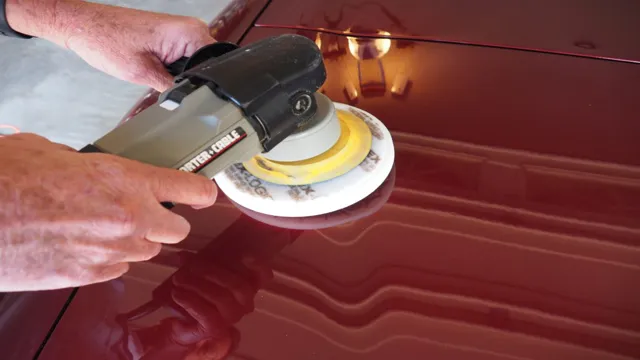
Choosing the Right Polish and Pad
When it comes to detailing your car, choosing the right polish and pad is essential if you want to achieve a flawless finish. Before you get started, gather all the necessary materials, such as a microfiber towel, a foam applicator pad, and the appropriate polish for your specific paint color. It’s also important to make sure you have plenty of time to complete the job properly, as rushing through the process can result in a subpar result.
Be sure to prepare the car by thoroughly washing and drying it, removing any contaminants or debris. This will ensure that the polish adheres properly, and helps to prevent any scratches or swirls. Always work in small, manageable sections, and use a consistent pressure and motion when applying the polish to the pad and car.
With the right approach, you’ll be able to achieve a high-quality shine that will make your car look its best.
Using the Buffer Polisher
If you’re looking to give your car a polished and shiny finish, using a buffer polisher can make the task much easier. First, you’ll want to choose the right buffing pad for your car’s needs. A foam pad works best for general polishing, while a wool pad is more effective for removing scratches and swirl marks.
Apply the polishing compound to the pad and gently spread it over the car’s surface. Turn on the buffer polisher, holding it with both hands and starting on a low speed setting. Begin buffing in circular motions, using moderate pressure and overlapping each section to ensure a consistent finish.
After finishing, wipe the car down with a microfiber towel to remove any excess compound and admire the shiny finish. With practice, using a buffer polisher can become a simple and effective part of your car maintenance routine.
Applying Polish to the Pad
If you’re looking to achieve a professional-level shine on your car, then using a buffer polisher can make a significant difference. Applying polish to the pad will bring out the best in your vehicle’s paintwork. Firstly, ensure that you have a clean and dry buffing pad.
Then, apply a small amount of polish to the pad. Start with slow and steady strokes and gradually speed up as the polish is spread evenly over the paint surface. Move on to the next section until the entire car is polished to perfection.
Remember to use the correct polish for your paint type and avoid applying too much pressure as it can lead to a damaged surface. Using a buffer polisher with the right products can help you achieve an excellent shine, making your car look like it’s brand new once again.
Working on Small Sections of the Car
When it comes to detailing cars, working on small sections at a time is essential to achieve the best possible results. One helpful tool to use in this process is a buffer polisher. This machine takes the elbow grease out of polishing and buffing, saving time and effort.
The key is to work on a small section at a time and apply the appropriate amount of pressure. Too much pressure can damage the paintwork, and too little may not provide the desired effect. Using a buffer polisher helps achieve a perfect finish, especially on larger vehicles where working by hand can take hours.
When using a buffer polisher, always go over the same area multiple times and gradually reduce the pressure to avoid swirl marks. Overall, incorporating a buffer polisher in your car detailing routine can save time and energy, producing a professional finish in less time, and with less effort.
Using the Buffer Polisher Correctly
Using the buffer polisher can be a game-changer when it comes to getting the perfect finish on your car. However, it’s essential to know how to use it the right way to avoid damaging your vehicle’s paint. Firstly, ensure that your car is clean and dry before starting.
Then, begin with a low-speed setting and slowly work up to a faster one. Always keep the polisher moving and don’t stay in one spot for too long. Apply light to medium pressure and let the tool do the work.
Remember to check your progress regularly to avoid swirling or burning the paint. With practice, you’ll master the art of using a buffer polisher and be able to achieve that showroom shine without leaving any damage.
Finishing Up and Maintaining the Car
After washing and clay bar-ing your car, it’s time to bring out the buffer polisher. Using a buffer can be intimidating, but with the right technique, it can give your car an impressive shine. Start by choosing the right pad for your machine and product.
Always start with the least aggressive pad and product, and if it doesn’t provide the desired result, move up to a more aggressive pad or product. Always be sure to work in small sections and use a side-to-side motion, keeping the buffer moving at all times to avoid burning through the clear coat. Remember to apply light pressure and let the weight of the machine do the work for you.
Once you have the desired shine, wipe off any excess product and move on to the next section. After finishing, maintaining that shine is important. Regular washing and waxing will prevent any dirt or debris from damaging your paint job.
Proper maintenance will also ensure that you don’t have to use the buffer polisher too frequently, as too much buffing can wear down the clear coat over time. With these tips, you’ll be able to make your car shine like new with a buffer polisher.
Removing Any Residue from the Car
After thoroughly washing and drying your car, it’s crucial to remove any residual water or soap that may have been left behind. This step helps prevent watermarks, streaks, and other unsightly blemishes on your car’s surface. One popular method for removing any residue is to use a microfiber towel or chamois, which are gentle on the car’s finish.
Simply wipe the surface in a back-and-forth motion, being careful not to apply too much pressure or rub too hard. If necessary, you can also use a detailing spray or quick detailer to help lubricate the surface and remove any remaining residue. Additionally, regularly maintaining your car’s appearance by washing and waxing it can help prevent the buildup of dirt and grime, keeping it looking newer for longer.
Overall, taking the time to properly finish up and maintain your car is well worth the effort to keep it looking its best.
Keeping the Buffer Polisher Clean and in Good Condition
Keeping your buffer polisher clean and in good condition is crucial to ensure efficient performance and long-lasting use. After finishing up with your car, take the time to clean the machine with a soft cloth and mild detergent. Avoid using harsh chemicals or abrasive materials that could damage the polisher’s surface.
If any debris or residue has accumulated on the pads, remove them and wash them thoroughly. Inspect the pads for signs of wear and tear, and replace them if necessary. Regular maintenance will help you achieve a professional-looking finish and extend the lifespan of your buffer polisher.
By taking care of your tools diligently, you’ll be able to enjoy a shiny, lustrous car for years to come.
Conclusion
So there you have it, folks. Using a buffer polisher on your car is like giving it a spa day. Just like how exfoliating and massaging your skin can make it glow, using a buffer polisher can make your car shine.
But like all good things, there is a technique to it. Remember to start with a clean surface, choose the right pad and polish, move slowly and use light pressure. With these tips in mind, your car will be looking like it just left the showroom in no time.
Now go forth and buff, my friends!”
FAQs
What is a buffer polisher and how does it work on cars?
A buffer polisher is a tool used to remove scratches and swirl marks from a car’s paint. It works by rotating a pad at a high speed, which buffs the surface of the car to restore its shine and smoothness.
What type of buffer polisher should I use for my car?
There are two types of buffer polishers: orbital and rotary. Orbital polishers are more beginner-friendly and gentle on the paint, while rotary polishers are more powerful and can remove deeper scratches. It’s best to choose the type that suits your skill level and the condition of your car’s paint.
What kind of buffer pad should I use for my car?
Buffer pads come in various materials, including foam, microfiber, and wool. Foam pads are gentle and suitable for light correction, while wool pads are more aggressive and suitable for heavy correction. Microfiber pads are a middle ground between the two. Choose the pad material that suits the level of correction your car needs.
How do I prepare my car for polishing with a buffer?
Start by washing and drying your car thoroughly to remove any dirt or debris that could scratch the paint. Then, apply a clay bar treatment to remove any embedded contaminants. Finally, mask off any areas that you don’t want to come into contact with the buffer.
How do I use a buffer polisher on my car?
Apply a small amount of polishing compound to the buffer pad, then spread it over a small section of the car’s paint. Turn the buffer on and move it in slow, overlapping motions across the section. Apply consistent pressure and avoid overheating the paint by working in short intervals. Repeat the process on the rest of the car, working one section at a time.
How do I avoid damaging my car’s paint while using a buffer polisher?
Use the correct type of buffer pad and polishing compound for your car’s paint. Avoid using too much pressure or working in one area for too long, which can cause overheating and damage. Finally, always keep the buffer moving to avoid creating swirl marks.
How often should I use a buffer polisher on my car?
It depends on how much wear and tear your car’s paint undergoes. For most cars, polishing with a buffer once or twice a year should suffice. However, if your car is exposed to harsh conditions or suffers from frequent scratches and swirl marks, you may need to use a buffer more often.

